Women's Health & Maternal and Child Health Programs
MCH programs were the original focus of public health, and continue to be a major focus in the USA as well as the remainder of the world. To assist you, in starting to learn about the breadth and depth of women's and children's health and the interwoven programs, we provide the following PowerPoint slide shows as well as a set of hot links to useful health sites for women and children. Review the contents of the hot links prior to the class.
1)Review at the History of MCH from HRSA's MCH Bureau. Consider which of the interventions on the timeline had the most significant role in improving maternal and infant health. Note that you can click on any of the items in the timeline to get an expanded discussion. Also note that maternal and child programs can trace their roots back to the 1850s with an emphasis on the 1st soup kitchen in the 1890s.Look at the maternal and child health at a glance page from her so to look at some the current emphases. Be sure to look at the HRSA webpage on public health.
2) Look at the excellent data set at Women's Health 2013 ( has not been updated since 2013) Read the Introduction, Population Characteristics, and Health Status. You may find additional data at the WomensHealth site and at the CDC Women's health page. Look at this Perspective on Menopause from March 3 2016 issue of NEJM, describing poor treatment of women;s health due to misunderstood research results..
Also scan the following pdf files:
Virginia Women's Health Statistics, Although this is the last tabular listing of women's health (the problem with many national assessments is the infrequency with which they are updated) you can find most of the newer statistics for Virginia in the department's statistical reports and tables. When you have looked at this data you should also consider how it relates to healthy people 2020 view of MCH data and objectives..Look at this March 16, 2016, report from the IOM on women's disadvantages in healthcare.
Editorial from JAMA, Dec. 2010, on importance of recognizing Women's Health and this recent Commonwealth Fund report on Health Reform's Potential for Women's Health, and a recent TED talk on "Why medicine often has dangerous side effects for women." Also scan this article on violence & Women's Health. A March 2016 NEJM Perspective on Contraception.
Graphic from the Kaiser Family Foundation on Prevention, Women and the ACA.
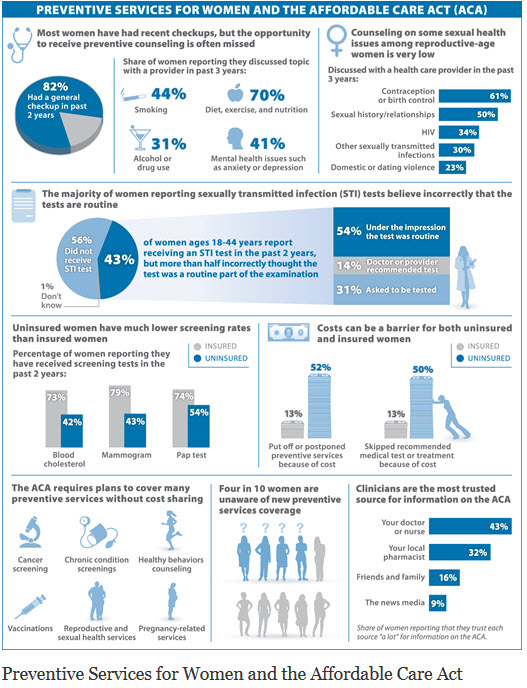
Also scan the discussion in this 2014 article on family planning from the CDC
Scan these resources for Women's Health :
Women's Health Virginia
March of Dimes - Status of newborn screening Think back to the session on Genetics.
Women's & Children's Health Policy Center - JHU (Click on some of Projects to look at the range of research)
ACOG: Pre-term Birth: Causes, Consequences, and Prevention
CDC update on contraceptive methods and review from the NYT on promoting use of condoms by men
Look at this story on use of long acting contraception (Oct 2, 2014).
Male/Female Leading Causes of Death, 2009
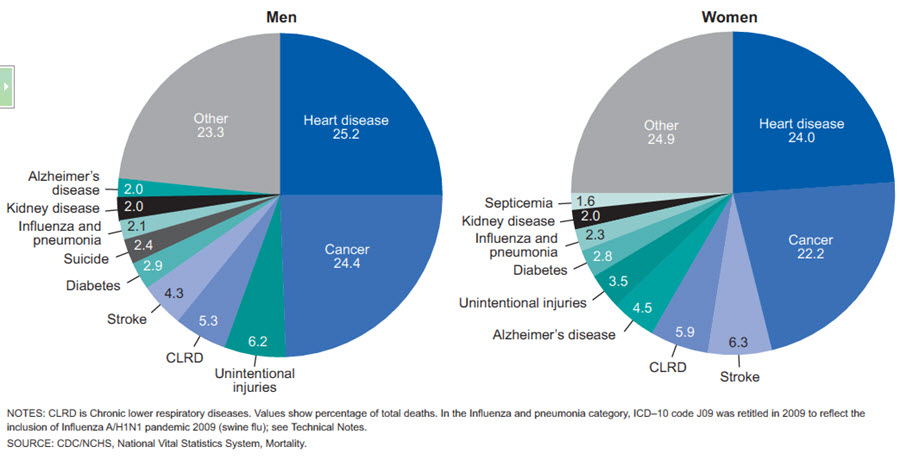
women really are different to men, even in the way they dieFinally, take a look at the most recent iteration of the "women's preventive services guidelines" posted in late 2016.
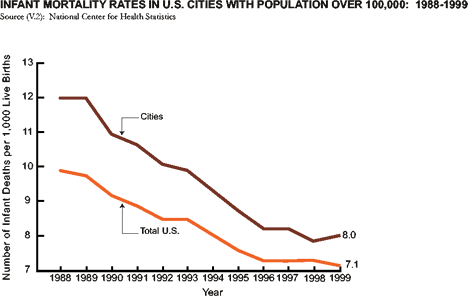
You can also look at this data for 1998-2008 page 10
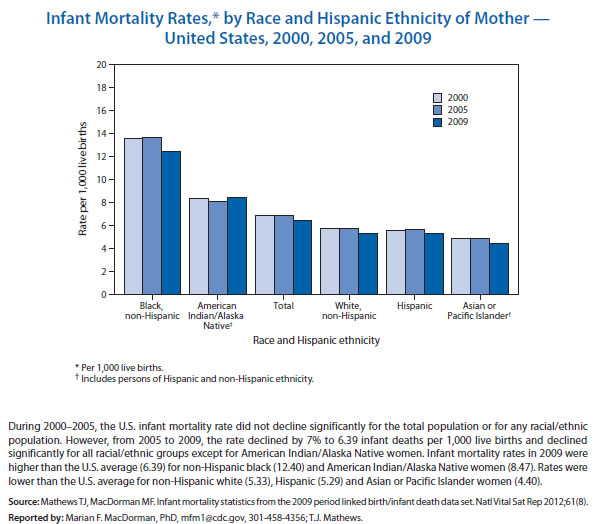
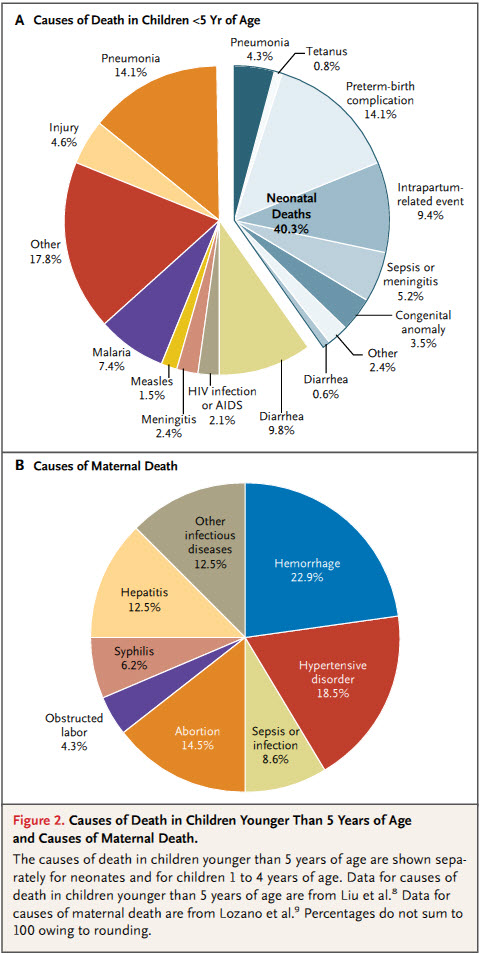
3) Perinatal Health. Presented by Joan Corder-Mabe RN MPH.
Also look at this article on infant mortality in Holland, Then this recent article on International Comparisons of perinatal indicators
Also this 2013 report on infant deaths from the CDC
Figure 2- Maternal Mortality Rates USA

Also scan these recent papers on Premature Birth and Black/White differences.
Editorial from Lancet
Stillbirths, Global Vision for 2020 - Lancet
Epidemiology of Preterm Birth
Nation Gets A "D" As March of Dimes Releases Premature Birth Report, How does your home state rate?
Also this recent viewpoint from JAMA
Costs of hospital births. Also look at this discussion on home vs. hospital births. As a med student I routinely went out with nurse midwives to attend births in people's homes. This is still common in Europe in relation to the strong link between public health and primary care in those countries, which for the most part is missing in the US.. Consider this introduction to the recent UK report on maternal health nothing about the HP 2020 objectives for the US and a short review on improving birth outcomes in the US
Value of spacing birth intervals. Also this perspective from the NEJM on expanding access to contraception.
Read the discussion in this article by Dr. Chapman, a member of our faculty.
What about a global perspective on MCH Issues and this editorial from the BMJ in June 2012, Also this talk by Hans Rosling.
From the WHO on International Standards, how this will help comparisons of birth & death rates. Now look at this report from Kings Fund on the current practice of perinatal care and compare that with US. You think we can learn anything from this study that we could apply to the US?
4) Children's
Health Bethany Geldmaker, Ph.D., Virginia
department of Health, note the importance of brain development in early infancy.
Look at: Child
Health USA 2014, Work your way through the to get a feel for the information available.
Summary: Child and Adolescent Health Care and Health Quality: Measuring What Matters: IOM 2009. Look at goals on page 6, recommendation 7 on page 10.
Read the section on Diarrhoea in the Atlas of Environmental Health (pages 12-15). There are areas in the USA, such as southwest Virginia, where these conditions exist.
Look at page 13 of the UK child health standards. Also look at this 5 minute discussion from the American College of Pediatrics on poverty and child health.
Child Health Links:
Expanding Coverage for Children -- The Democrats' Power and SCHIP Reauthorization," Has the new Health Care Bill (March 2010) enacted these recommendations?
Scan the Kids Count State-Level data-2011
Child Health Care Quality Toolbox
National Campaign to Prevent Teen Pregnancy
Scan the September 18 issue of the Lancet which is devoted to Women & Health, using the journal search page of the library.
If you enjoyed this topic think about enrolling in Dr. Chapman's MCH Epidemiology Course (EPID 622), where you will learn about MCH topics throughout the life course with a focus on policies and social determinants that contribute to disparities and the datasets used by health departments to study them.
6) MCH URLs.
